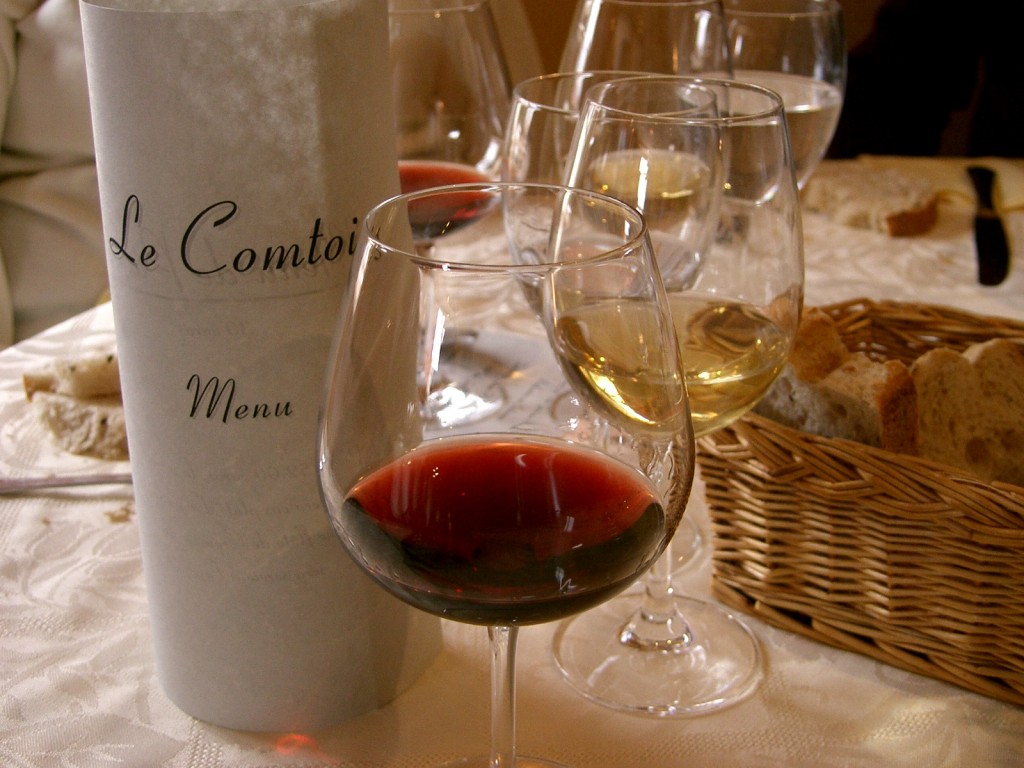Most of us love a nice glass of wine, but don’t know much about the science behind it — what are the characteristics of pinot noir vs. cabernet, where are the grapes grown, why are some areas associated with better wine than others? It’s easier to appreciate the drink when we know what it’s meant to taste like and where it comes from.
The first (and most enjoyable) step is to start tasting — for instance, start with a merlot from the Bordeaux region of France — but if you’re still at work or don’t have a bottle handy, here are some quick tips for getting to know your grape.
French wine regions and why they’re so famous
When it comes to wine, France is divided into seven key regions: Alsace, Bordeaux, Burgundy, Loire, Provence, and the Rhone Valley. Each area has its specialty — for instance, Bordeaux is renowned for its red wine production, primarily cabernet sauvignon, cabernet franc, and merlot varieties, whereas Burgundy boasts some mean pinot noir and chardonnay — and this is determined on the particular terrains favoured for growing certain kinds of grapes. The pinot noir grape — somewhat of a diva in the world of viticulture — thrives in Burgundy because of the region’s warm summers and cold winters. On the other hand, the cooler climate of the Loire Valley makes it ideal for light or sparkling white wine production.
French wine growers are aware of the conditions needed to grow the best grapes. Thousands of vineyards produce many varieties of red and white wine annually that range from inexpensive to wincingly pricey. Viticulturists from France export their wines all over the world because they are known for quality and their ability to maximise the available terrain and weather conditions. Moreover, in 1935, a series of strict regulations were passed — the Appelation d’Origine Controlee system — regarding wine quality. Think of that the next time you uncork a bottle.
The characteristics of grape varieties and food pairing
All common styles of wine — red, rose, white, sparkling, and fortified — are produced in France, and almost all are internationally exported. It’s important to know the characteristics of the different kinds of grape, as they come into play when pairing wine with food (something the French are very particular about). Here’s a sample of popular varieties of grape in France and their identifying features.
Merlot is one of the most highly planted grape varieties in the world. There are two kinds: “international” merlot and “Bordeaux” merlot. The grape is soft and fleshy, and exudes an inky, purple colour and full, smooth flavours of plum and blackberry. The “Bordeaux” style tends to include red fruits (raspberries, strawberries) and leafy notes. The alcohol level is moderate to high. Merlot also blends well with cabernet sauvignon grapes. Pair cabernet-merlot with grilled and charred meats, and fruitier merlots with salmon, mushroom-based dishes, or shellfish. Avoid overly strong flavours like blue-veined cheese.
Grenache grapes are grown in hot, dry regions, and commonly blended with syrah, carignan, tempranillo, and cinsaut varieties. The taste is typically spicy, berry-flavoured, soft on the palate, and high in alcohol content. Notes of strawberry, raspberry, and white pepper are common, and when aged, grenache wines take on leathery or tarry flavours.
Cabernet sauvignon is another extremely common international variety. Its grapes are small, with thick, leathery skins, and therefore high in tannins (what cause the dry, puckering sensation) when produced into wine. Cab sav wines are full-bodied and acidic — those from cooler climates have notes of blackcurrant, green pepper, mint, and cedar, while those from warm climates are more “jammy”. In parts of Australia, cab sav wines adopt eucalyptus or menthol flavours.
Different foods accentuate different notes in this variety of wine — for example, pairing cab sav with black pepper is a good idea (steak with pepper sauce or pepper-crusted tuna), or creamy, buttery, fatty dishes to bring out the wine’s fruitiness. Avoid pairing with delicate dishes like shellfish or light desserts.
Chardonnay is a variety of white wine with a neutral flavour. In cooler climates, chardonnay is light- to medium-bodied and tastes of green plums, apples, and pears. In warmer climates, the grape adopts flavours of citrus, peach, and melon, or even tropical fruits like mango or banana in hot weather. Chardonnay is often blended with sparkling wine. Pair with roast chicken or other white meats, smoked fish, guacamole, and spicy Asian dishes.
Pinot noir is a cooler climate, red variety. The grapes are difficult to grow, so thankfully the finished product is widely considered as one of the best in the world. Thin-skinned and fleshy, pinot noir grapes are lightly coloured, medium-bodied, and low in tannins, and exuding flavours of cherry, raspberries, and strawberries. As they age, they sometimes take on a straw-like, or “barnyard”, quality.
Sauvignon blanc is a crisp, dry, and refreshing white varietal, and commonly a component of sweet dessert wines. Flavours range from grassy (green peppers, nettles) to tropical (passionfruit), depending on climate. Best served lightly chilled, it pairs well with fish (including sushi) and cheese.
Drink up, connoisseurs!
